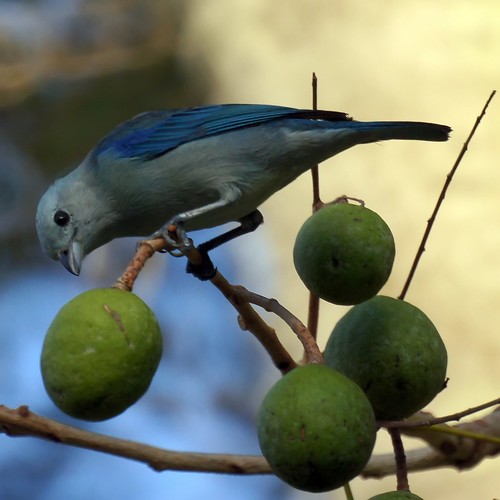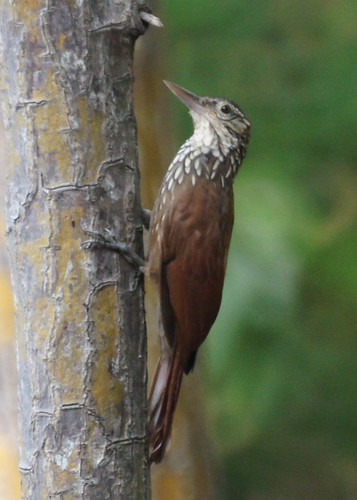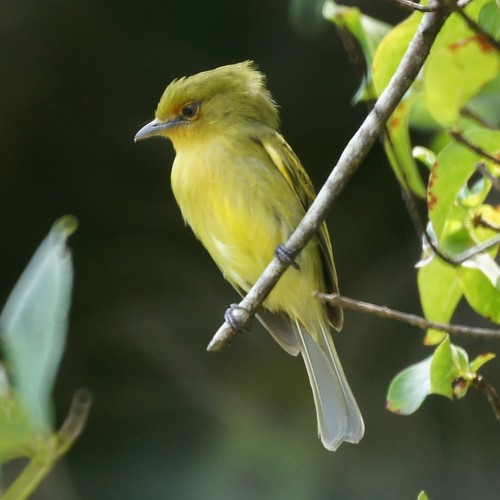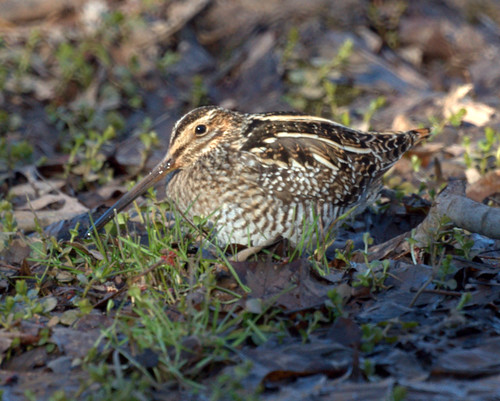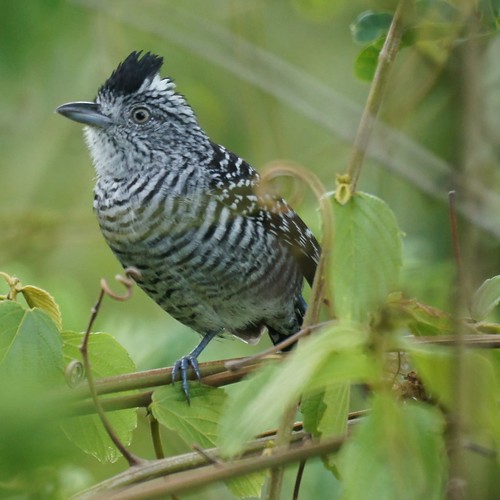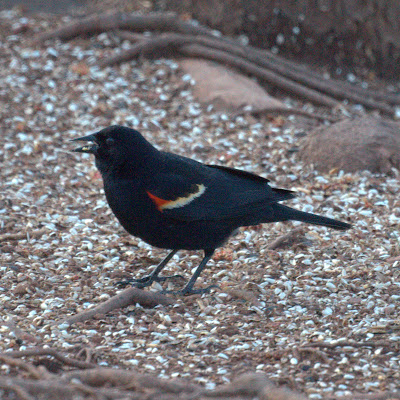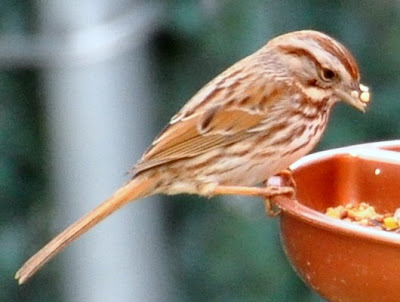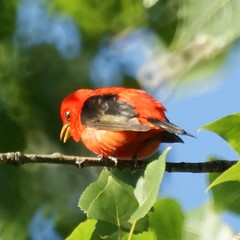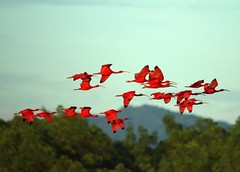Thursday, March 31, 2011
Bananaquit near Blue Waters Inn in Tobago

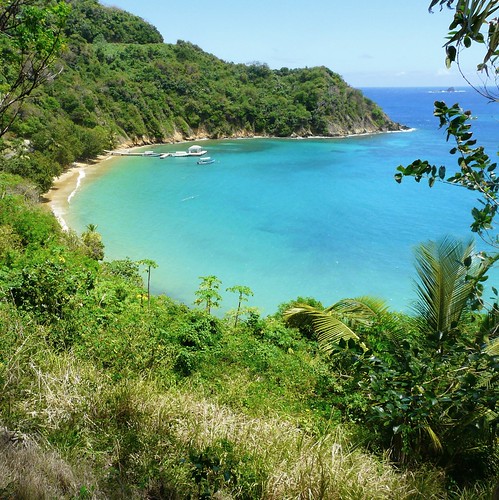
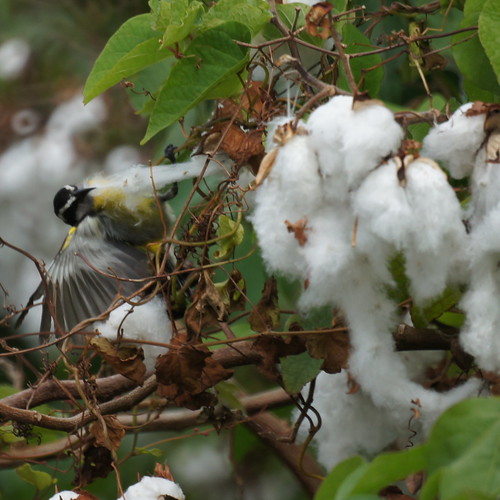
We enjoyed the birds quite a bit on our trip to Trinidad and Tobagao. However, the accommodations weren't as luxurious as some of our Caribbean vacations that we take with relaxation and "beach lazing" in mind.
At the Blue Waters Inn there is some cotton growing. It's now wild, left from an earlier plantation. We saw hummingbirds and bananaquits pulling at the cotton to line their nests. Not that we are complaining, but we considered doing the same to increase the thread count on the hotel sheets.
Wednesday, March 30, 2011
Bearded Bell Bird from Trinidad
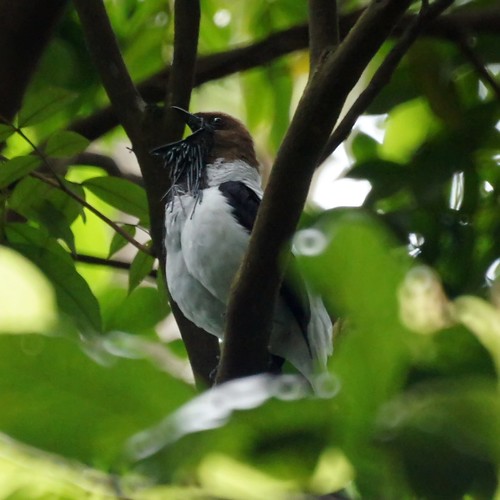
Now, here is one strange bird. Its "beard" is actually skin that hangs and not feathers. The color gets darker as they age. It is the loudest bird and can be heard all over the forest from a great distance. However, without our excellent guide, Molly, from Asa Wright, we would never have seen them even though they were practically right on top of us. They are like ventriloquists and throw their voices, so we were looking too high.
American Pygmy Kingfisher from Trinidad
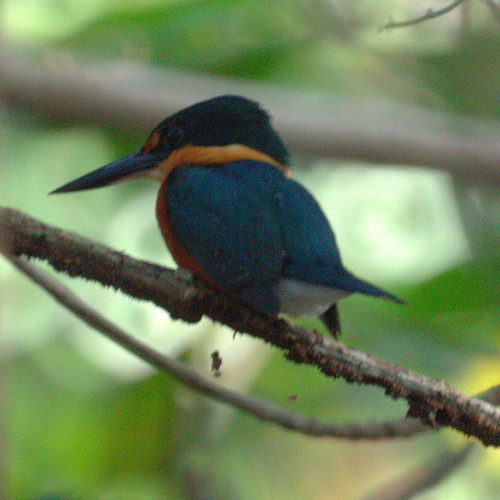
We had a lot of fun tracking this Pygmy Kingfisher in the swamp. Everyone in our boat wanted to see it, so we didn't give up even though it kept trying to evade us. It is really quite small in comparison to the Belted Kingfishers we see at home. We're having a rum punch tonight while we post just to re-celebrate the good time we had.
Scarlet Ibises from Coroni Swamp in Trinidad
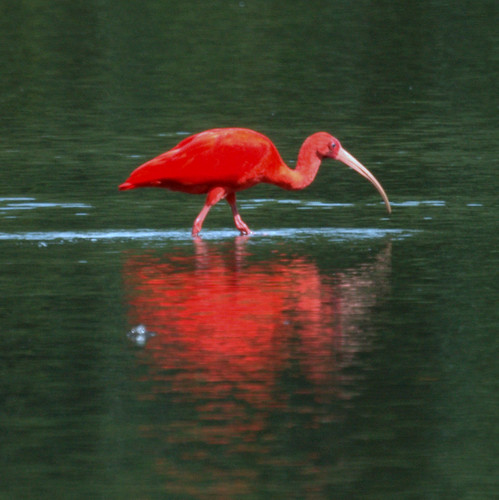
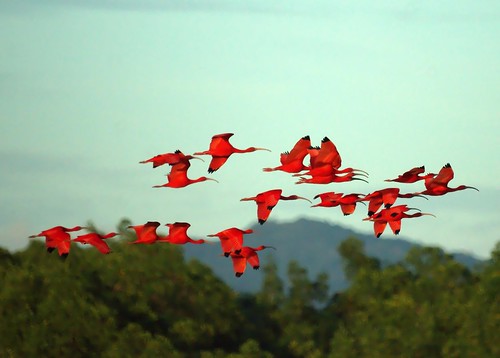
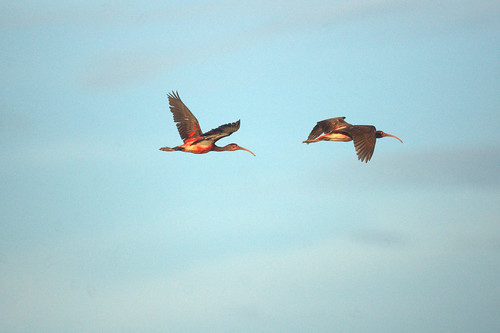


During our stay at the Asa Wright Nature Center, one of the tours off site that we decided to take was to see the evening roosting of the Scarlet Ibises. Fortunately we had a great group of four other birders with us, and the boat tour operators took just the six of us from Asa Wright in our own boat. The trip through the swamp out to the Ibises also resulted in many bird sightings that we will post later, but for now please enjoy this marvelous display put on by the Scarlet Ibises. They come in low over the water by the thousands creating a very spectacular show, and then they roost in trees. After a lot of them were settled, a black hawk flew in which upset the whole group so we got to see them take off and land again. One picture shows the colors of the juveniles before they turn bright scarlet. The picture of the lone Ibis which is closer was taken behind the visitor center where we spent a little while before heading out in the boat.
Horned Grebe in Winter Plumage: Photo contributed by Chris
A couple days ago I spotted this little fellow fighting the windy waves in Lake Musconetcong. I'd never seen him before, and after a bit of research determined that he's a Horned Grebe. During one of his dives I managed to sneak up on him before he turned tail and swam further out to the center of the lake.
Tuesday, March 29, 2011
Wilson's Snipe: Johnson Park in Piscataway
Golden-Olive Woodpecker from Trinidad

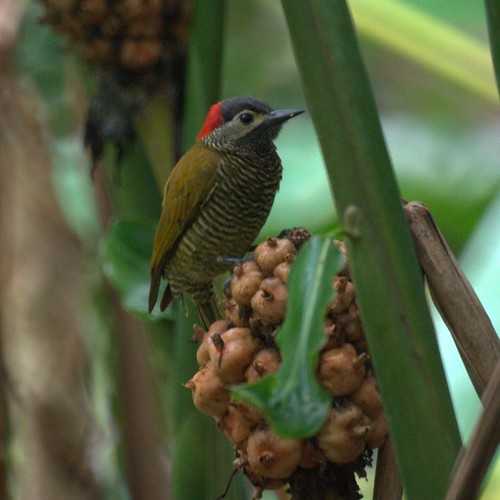
We adore our woodpeckers at home, so we knew we would be delighted if we were able to see some other varieties of woodpeckers in Trinidad and Tobago. While on the lookout for a Chestnut Woodpecker that had been seen by other birders, we were treated to an appearance by this lovely smaller Golden-Olive Woodpecker. Chris did get a good look at the Chestnut Woodpecker we were stalking, but Mike did not, which is another of many good reasons for a return visit to Trinidad and Tobago.
Friday, March 25, 2011
Barred Antshrikes from Tobago
White-fringed Antwren eating an ant in Tobago

In Tobago, we observed a male white-fringed Antwren for a while but were never able to photograph him because he moved about so quickly among the branches. He has stunning mask.
The next day, we saw this juvenile white-fringed antwren. Mike was particulay pleased when he discovevered he photographed it with an ant in its beak.
American Robin waiting for spring
We think this robin must feel about like we do - hey, the calendar says it's spring! At least this was a light dusting of snow which has already mostly melted so the robins won't get too discouraged. It will be a true celebration of spring when the catbirds get here - we can hardly wait.
Thursday, March 24, 2011
Honeycreepers of Trinidad and Tobago - so colorful and adorable!
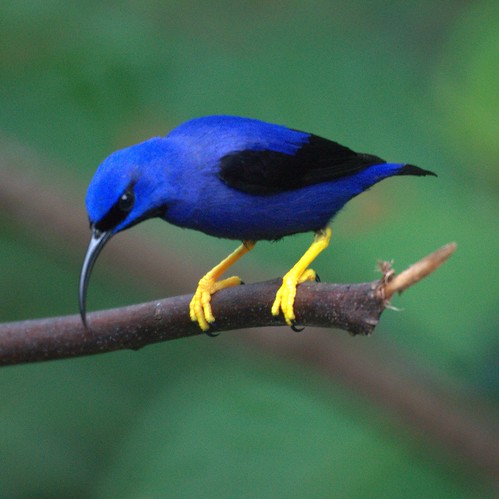
Purple Honeycreeper (male)
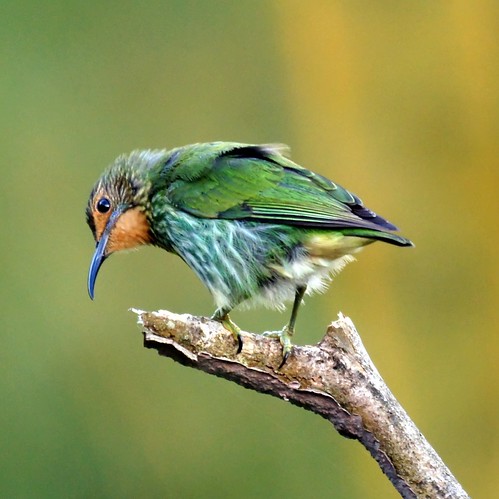
Purple Honeycreeper (female)
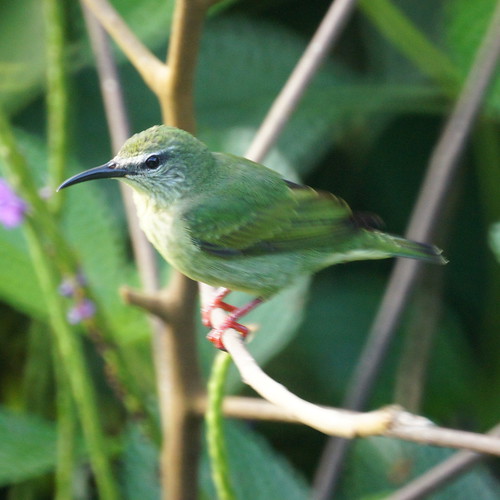
Red-legged Honeycreeper(female)
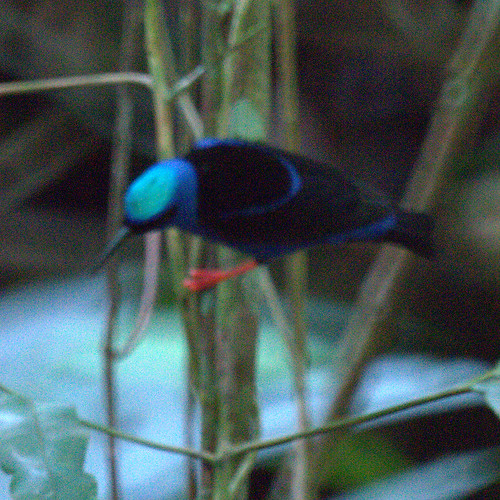
Red-legged Honeycreeper(male)

Green Honeycreeper (male)

Green Honeycreeper (female)
We were very anxious to see the Honeycreepers on our trip, especially the red-legged ones. As it turned out, the star of the Honeycreeper show for us was the female Purple Honeycreeper. Almost always in the bird world, the female is quite drab in comparison to the male. Well, not these little darlings! The females were decked out in at least three shades of green and had some seriously fancy breast striping plus a pretty peach neck and eye area. Chris even commented that she herself would never have the guts to wear all those shades of green in one outfit. It just seemed like the females had the personalities to match their colors too as they darted boldly about with all the males.
A male red-legged honeycreeper made only one brief appearance at the feeders at Asa Wright, but we were able to see one again out on one of our rainforest walks. It almost seemed like cheating when we watched all the Honeycreepers coming to the nectar feeders and flowers near the center, so it was more fun in a way to find them out in the trees. And, boy, do they pop with color when they're amongst all those big deep green rainforest trees.
We ended up with a funny little ritual thanks to the Honeycreepers. Anyone who knows us understands that Mike can be sort of distracted sometimes. If you don't know us, think absent-minded professor type. When traveling, that can make it hard to remember which color toothbrush Chris packed for him. This trip we had one purple and one green toothbrush with us, and Chris used the purple one first. So when Mike asked which was his, it was the green. Anytime Mike needed a reminder which color brush was his, we just said "opposite of the honeycreepers," i.e., purple for her and green for him. If Chris had given it any forethought, she might have chosen the green first - then we would have been just like the Honeycreepers instead of the opposite. Obviously the Honeycreepers put us in a pleasant and silly state of mind.
Wednesday, March 23, 2011
Early Spring Birds in New Jersey: Robin and Red-winged Blackbird
When we returned from Trinidad and Tobao, it was nice to see the spring birds. Robins had returned in numbers to our yard and Red-winged blackbirds were back too.
Labels:
American Robin,
Red Winged Blackbird,
Spring Birds
Booby Photos from Little Tobago Island
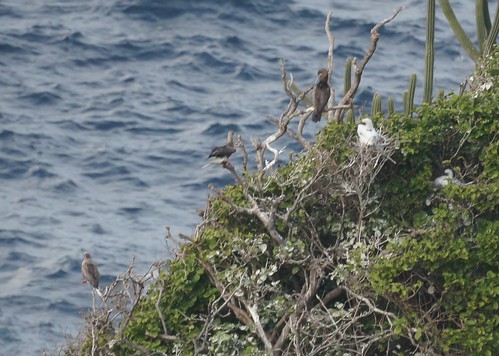
Red-footed Boobies in trees
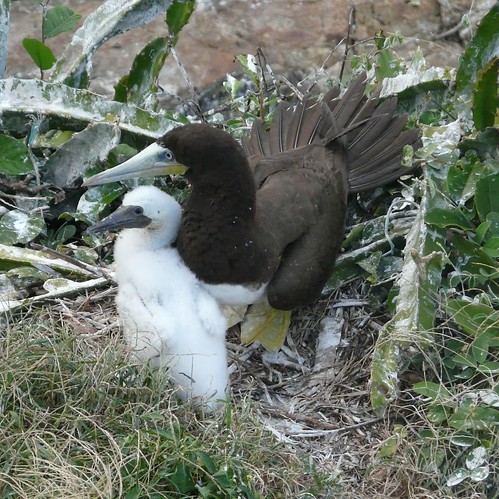
Brown Booby with chick

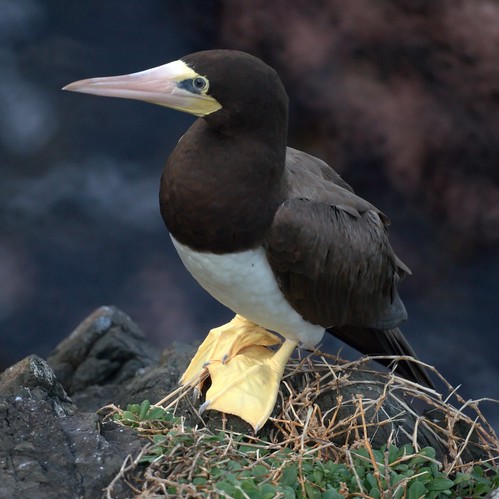
Brown Booby relaxing on the edge of a cliff

Juvenile Booby
Off the coast of Tobago, there is Little Tobago Island, a small island accessible by boat. Many boobies make their home on the trees and cliffs of this isloated island. We took a small boat out to the island, hiked to the top of the hill and saw their nests. Mike climbed down a steep trail to get closer to the chicks while Chris sensibly waited near the top. While Boobies can relax on a cliff, Chris cannot.
Labels:
Booby,
Brown Booby,
Red-footed Booby,
Trinidad and Tobago
Red-billed Tropicbirds from Little Tobago Island

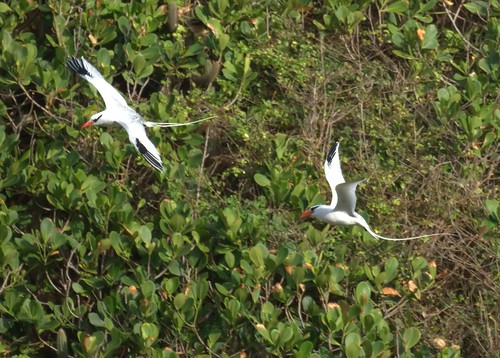
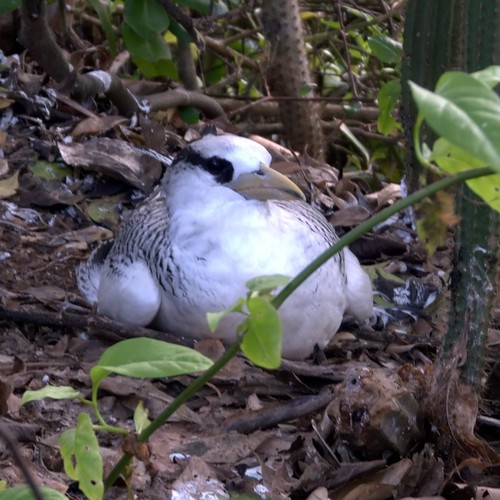
Red-billed Tropicbirds also nest on Little Tobago Island. The chicks' nests are seemingly unprotected on the ground. The adults spend hours flying among the ocean cliffs.
Labels:
Red-billed Tropicbird,
Trinidad and Tobago
Monday, March 21, 2011
Goodbye Ruby-Topaz (Birds of Tobago)

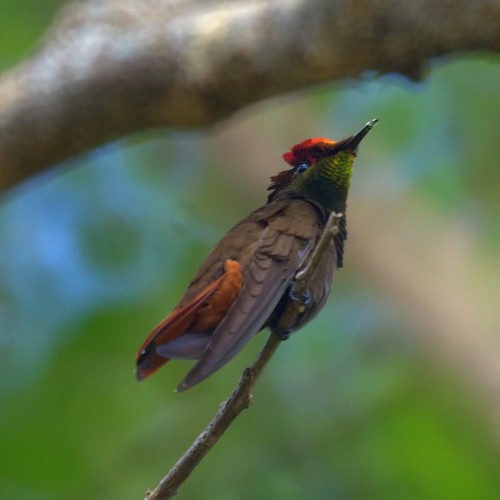
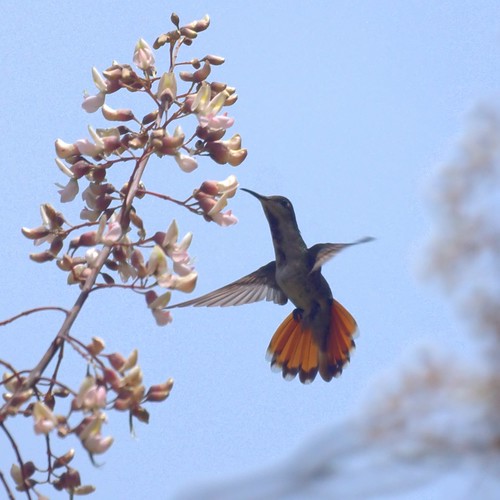
On our last full day in Tobago, we spent some time observing the ruby-topaz hummingbird. The male, in the top two photos has a spectacular red head, yellow neck and orange tail when the light hits it just right. The female ruby-topaz has fewer colors on the head and neck, but just as spectacular a tail.
Sunday, March 20, 2011
Friday, March 18, 2011
Birds of Trinidad and Tobago
Last year, when flying back from Grenada, a stewardess overheard us talking about the birds we saw and told us about the birds in Trinidad and Tobago. Because these islands are below the equator and off the coast of South America, they get many species that are not seen in the US or elsewhere in the Caribbean. So this year we planned a trip to Trinidad and Tobago. Below are a few of the highlights. Over the next month or so, we'll post additional photos and stories of birds from this region, intermixed with the birds of New Jersey.

Tufted Coquette
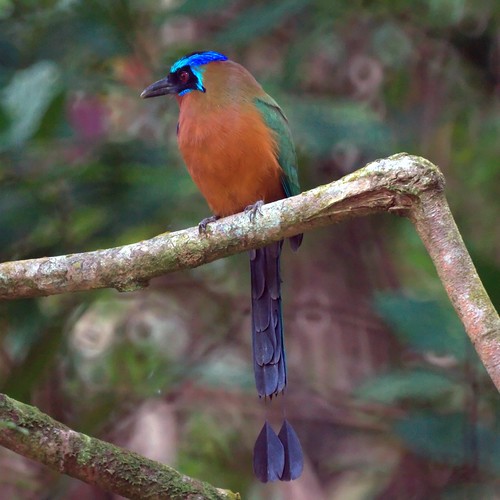
Blue-crowned Mot Mot

Rufous-tailed Jacamar
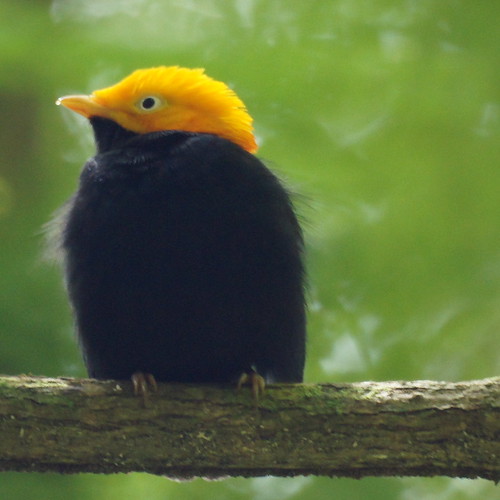
Golden-headed Manikan

Scarlet Ibis

Tufted Coquette

Blue-crowned Mot Mot

Rufous-tailed Jacamar

Golden-headed Manikan

Scarlet Ibis
Subscribe to:
Posts (Atom)

